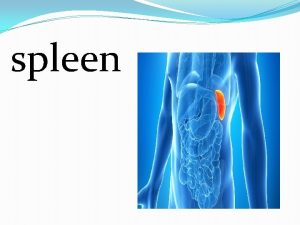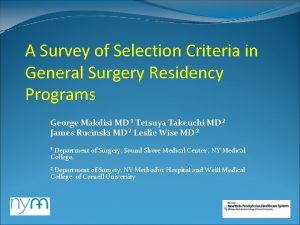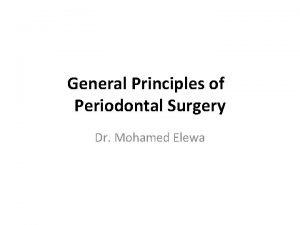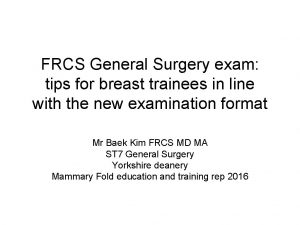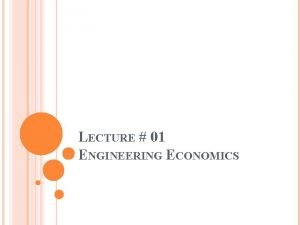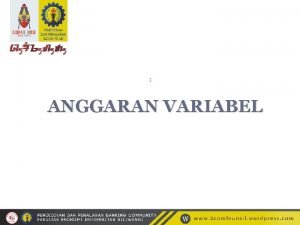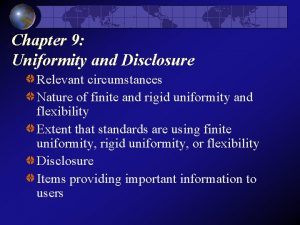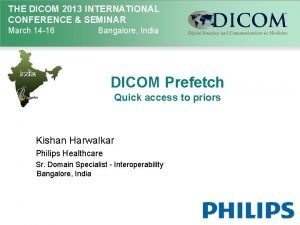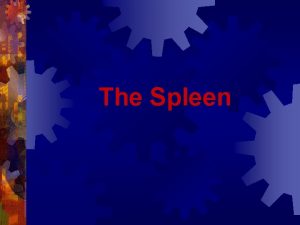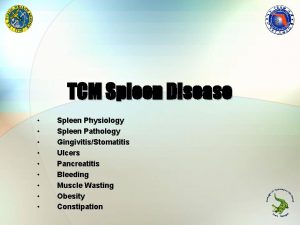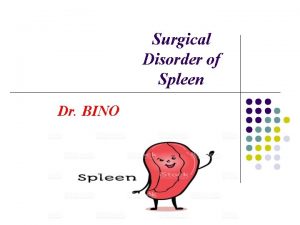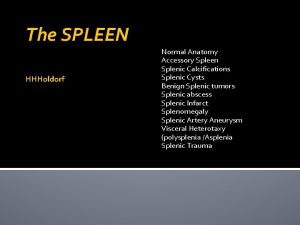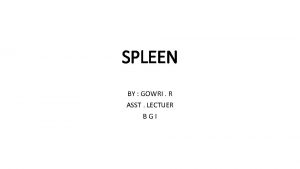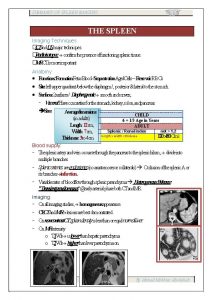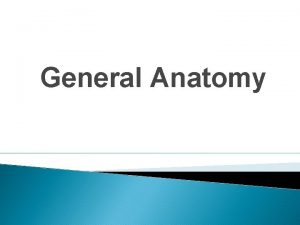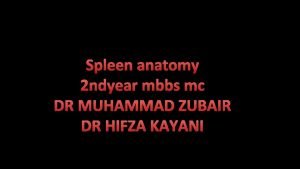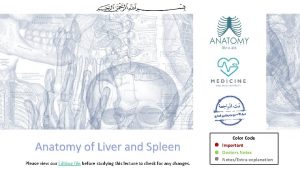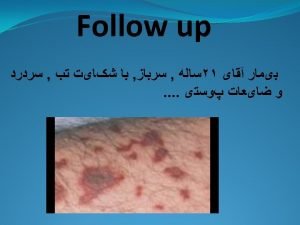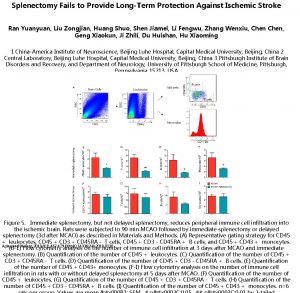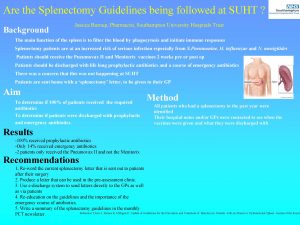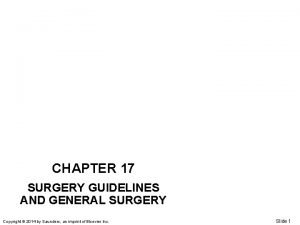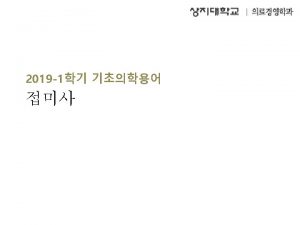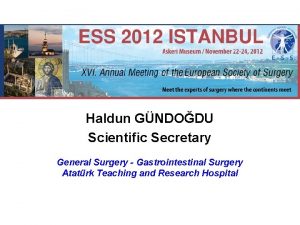General Surgery Splenectomy Addisyn Poduska Relevant Anatomy Spleen
























- Slides: 24

General Surgery Splenectomy Addisyn Poduska

Relevant Anatomy ❖ Spleen ❖ Largest mass of lymphatic tissue in the body ❖ Lies in the left upper quadrant, between the fundus of the stomach and the diaphragm ❖ Kept in position by the gastrosplenic, splenorenal, splenophrenic, and pancreaticosplenic ligaments. ❖ Made up of red pulp (predominantly vascular, 75% of its volume) and white pulp (primarily lymph tissue)

Anatomy: Blood Supply and Drainage and Innervation ❖ Arterial blood: splenic artery from the celiac trunk ❖ Portal vein: splenic vein arises from the hilum of the spleen and is later joined by the superior and inferior mesentaric vein ❖ Innervation: Medial and anterior parts of the celiac plexus, Vagus nerve

Physiology ❖ Prevents infection by creating white blood cells, and acts as the first line of defense against disease causing organisms ❖ Stores red blood cells and platelets (helps your blood clot) ❖ Filtration and destruction of old, damaged blood cells ❖ Not necessary for life, however excitement can lead to impairment of immunologic response that can become life threatening

Pathophysiology ❖ Primary indicator for a splenectomy is trauma with intraperitoneal hemorrhage ❖ Other disorders that may require a splenectomy: intraperitoneal injury; thrombocytopenia; neutropenia; splenomegaly; splenic abscess; parasitic cysts of the spleen. ❖ idiopathic thrombocytopenic purpura (ITP)

Diagnostic Exams ❖ history and physical ❖ CT scan ❖ Laboratory blood tests

Surgical Intervention ❖ Removing the spleen from the body

Special Considerations ❖ The surgical technologist may be responsible for manipulating the camera during the procedure as well as holding graspers.

Anesthesia ❖ General Anesthesia

Positioning ❖ Supine position ❖ Trendelenburg 5 -10 degrees to allow viscera to gravitate inferiorly. ❖ Table may be rotated to the right to increase exposure

Skin Prep ❖ Mid-chest to symphysis pubis ❖ bilaterally as far as possible.

Draping ❖ Square off with four towelsedge of upper towel placed mid -chest ❖ lateral towels placed using anterior superior iliac as guide ❖ edge of lower towel placed at symphysis pubis ❖ Standard laparotomy drape ❖ Camera cable cover

Incision ❖ A 10 to 11 mm trocar is inserted in the midline 2 to 3 cm above the umbilicus ❖ additional trocars are inserted

Supplies ❖ fog reducing agent ❖ silastic tubing (straight, 1000 -m. L bag normal saline, 3 way stopcock) ❖ Pressure bag ❖ Electrosurgical cord ❖ Foam padding for elbows and ankles ❖ pneumatic antiemboletic stockings ❖ clip cartridges (ligating) ❖ Staple Cartridge ❖ Video-cassette ❖ Foley catheter ❖ Nasogastric tube ❖ Suction tubing ❖ Skin closure strips ❖ Endobag

Equipment ❖ padding for elbows and ankles ❖ suction ❖ electrosurgical unit ❖ light source (example: Xenon 300 W) ❖ 2 Video monitors ❖ VCR (optional) ❖ mavigraph (optional) ❖ CO 2 insufflator ❖ silastic and suction tubing with 3 -way stopcock ❖ sequential compression device

Instruments ❖ Laparoscopic tray ❖ verres needle ❖ hasson trocar ❖ 2 trocars 10 -11 mm ❖ 2 trocars 5 mm ❖ Reducer caps ❖ extrudable fan-shaped retractor, endoscopic ❖ unipolar electrosurgical dissector, endoscopic ❖ telescope ❖ light cord ❖ camera ❖ graspers, endoscopic ❖ scissors, endoscopic ❖ clip applier, endoscopic ❖ endoscopic stapling device

Procedural Steps ❖ Verres needle is inserted and the pneumoperitoneum established. ❖ A 12 -mm trocar is inserted at the midline 2 -3 cm above the umbilicu; the laparoscope is inserted through this trocar. The other three trocars are inserted. ❖ An endograsper, endobabcock. or fan retractor is used to retract the stomach medially to expose the spleen; the instrument is placed through the most lateral trocar on the right. the abdomen is thoroughly explored for any accessory spleen, which is first excised. ❖ the dissection to free up the spleen begins with use of the endoscissors and endocautery to dissect the splenic flexure from the colon. ❖ ❖ The splenocolic ligament is divided using the endoscissors to free up the inferior section of the spleen. An endobabcock is used to carefully retract the spleen cephalad. The peritoneal attachment on the lateral side of the spleen is divided with endoscissors. ❖ A window is created in the lesser sac adjacent to the greater curvature of the stomach and along the medial border of the spleen. The laparoscope is placed within the lesser sack. ❖ The gastric vessels are divided with endoclips or endovascular stapler. the splenic pedicle is identified and dissected free with the endoscissors. ❖ The laparoscope is removed from the lesser sac. The tail of the pancreas is identified in order to avoid injury. The splenic artery is carefully dissected free and endoclips are placed, but not yet divided. the splenic vein is also dissected free and endoclips are placed. the vessels are now divided, starting with the artery, using the endovascular stapler. ❖ The spleen is now completely freed up and is placed inside an endobabcock. the end of the bag are brought upward through the supraumbilical or epigastrc port site. Th drawstring on the bag is opened and the spleen is morcellated inside the bag and removed in small pieces. the bag is fully removed. ❖ The laparoscope is re-inserted and the splenic bed is visualized to confirm hemostasis has been achieved. the suction/irrigator may be used. ❖ The trocars are removed and the trocar sites are closed.

Counts ❖ Initial count ❖ Final count

Dressings ❖ Steri Strips ❖ Dermabond ❖ Band-aids

Specimen Care ❖ The spleen is sent to pathology

Prognosis ❖ No complications: discharged from hospital within 24 hours ❖ Return to normal activities within four to six weeks

Complications ❖ Immunologic response may be impaired ❖ Hemorrhage ❖ SSI ❖ Death

Wound Class and Management ❖ Class 1: Clean ❖ Class 3: Contaminated (spillage occurs due to intraoperative injury to stomach or bowel)

Citations ❖ http: //www. mayoclinic. org/diseases-conditions/enlargedspleen/symptoms-causes/dxc-20214722 ❖ Goldman, Maxine A. 2 nd ed. N. p. : n. p. , n. d. Print. ❖ Frey, Kevin B. , and Tracey Ross. Surgical technology for the surgical technologist: a positive care approach. Boston, MA ❖ Greg's Power. Point
 Applied anatomy of spleen
Applied anatomy of spleen General surgery selection criteria
General surgery selection criteria Principles of periodontal surgery
Principles of periodontal surgery Alpine course frcs
Alpine course frcs Irrelevant used in a sentence
Irrelevant used in a sentence Decision making and relevant information
Decision making and relevant information Relevant cost adalah
Relevant cost adalah 5 step decision making process
5 step decision making process Consider all relevant criteria
Consider all relevant criteria Refine the problem
Refine the problem Culturally responsive vs culturally relevant
Culturally responsive vs culturally relevant Select significant and relevant information
Select significant and relevant information Pengertian anggaran variabel
Pengertian anggaran variabel Affirm the antecedent
Affirm the antecedent Cvp income statement
Cvp income statement Relevant cost for decision making exercises
Relevant cost for decision making exercises Relevant cost for decision making solution chapter 13
Relevant cost for decision making solution chapter 13 Chapter 11 decision making and relevant information
Chapter 11 decision making and relevant information What is font
What is font Is the bible still relevant today
Is the bible still relevant today Relevant circumstances adalah
Relevant circumstances adalah Chapter 11 decision making and relevant information
Chapter 11 decision making and relevant information Prefetching relevant priors
Prefetching relevant priors Relevant contextual factors
Relevant contextual factors 16 personalities.com/free-personality-test
16 personalities.com/free-personality-test
